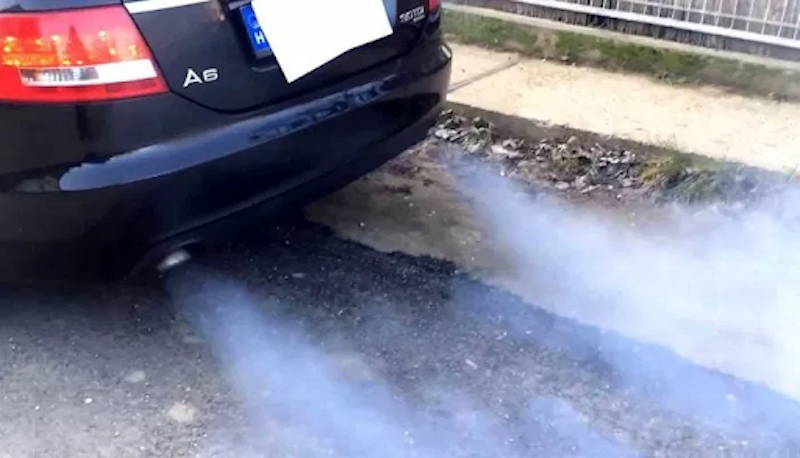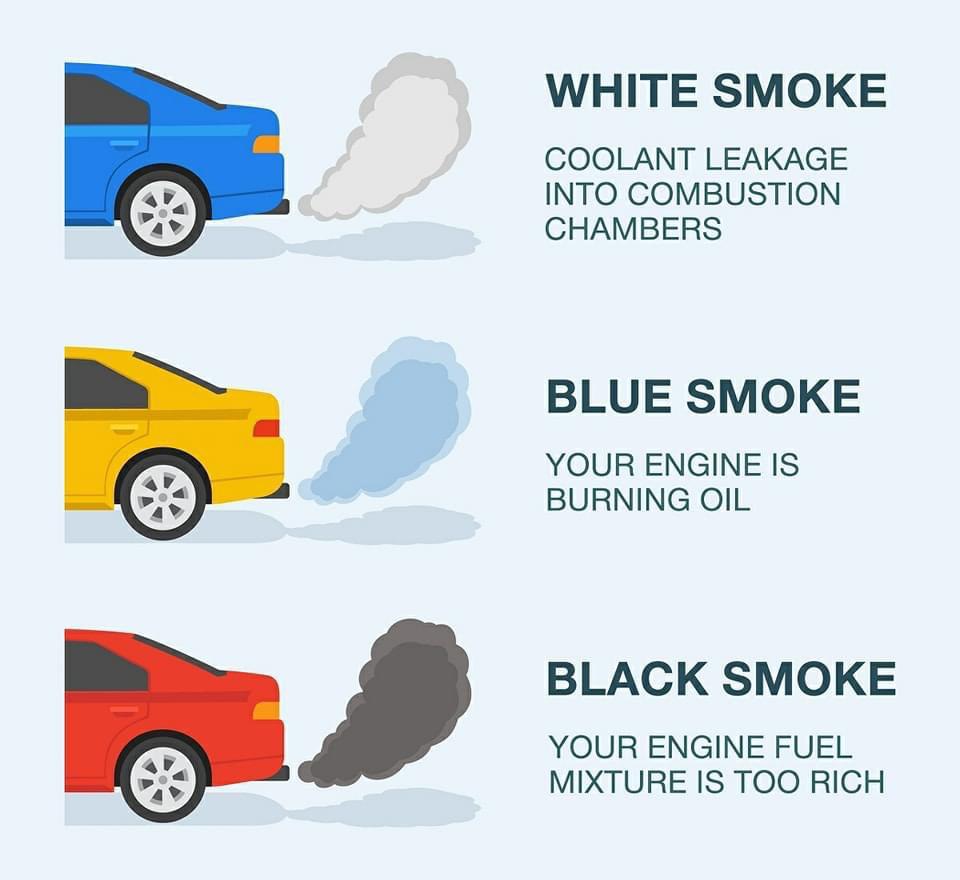To fix blue smoke from the exhaust, check for worn piston rings or valve seals. Replace them to address the issue.
Blue smoke from the exhaust is often a sign of burning oil, which points to internal engine problems. It can be caused by worn-out piston rings or valve seals, leading to oil leaking into the combustion chamber and burning along with the fuel.
Ignoring this issue can result in further damage to the engine. However, identifying and resolving the underlying problem can restore engine efficiency and reduce harmful emissions. This article delves into the common causes of blue smoke from the exhaust and offers actionable solutions to address this issue effectively.
Common Causes Of Blue Smoke
Blue smoke coming from your car’s exhaust can be a cause for concern, indicating a possible problem with the engine. One of the common causes of blue smoke is related to engine oil issues. When the valve seals become worn, they fail to properly seal the combustion chamber. This allows oil to leak into the cylinders and burn along with the fuel, resulting in the blue smoke.
Another engine oil-related issue that can cause blue smoke is worn piston rings. These rings help to create a tight seal between the pistons and the cylinder walls, preventing oil from entering the combustion chamber. When the rings wear out, oil can leak into the cylinders, leading to blue smoke.
It’s important to address engine oil issues promptly to prevent further damage to the engine. Regular oil changes and maintenance can help prevent these issues from occurring. If you notice blue smoke coming from your exhaust, it’s best to have your car inspected by a qualified mechanic to determine the exact cause and take appropriate actions to fix the problem.

Credit: grimmermotors.co.nz
Diagnosing Blue Smoke
Observing Blue Smoke: When diagnosing blue smoke from the exhaust, it’s crucial to carefully observe the color and density of the smoke. Blue smoke typically indicates burning oil, which may be due to worn piston rings or valve seals.
Checking Oil Consumption: To determine the source of the issue, it’s important to monitor the oil consumption of the vehicle. Keep track of how much oil is being consumed over a specific mileage, as excessive oil consumption could be a contributing factor to the blue smoke.
Steps For Fixing Blue Smoke
Replacing Valve Seals: Blue smoke from the exhaust can be caused by worn valve seals. To fix this issue, you’ll need to replace the valve seals to prevent oil from entering the combustion chamber.
Repairing Engine Oil Leaks: Blue smoke can also result from engine oil leaks. Check for oil leaks around the engine and repair any damaged gaskets or seals. Additionally, make sure to perform regular maintenance to prevent future leaks.
Credit: newparts.com
Maintenance Practices
Regular Oil Changes:
One of the most important maintenance practices to prevent blue smoke from exhaust is regular oil changes. Ensure to follow the manufacturer’s guidelines for the recommended oil change interval. Changing the oil regularly helps to maintain the proper lubrication of the engine components, preventing excessive wear and tear and minimizing the chances of oil burning.
Monitoring Oil Levels:
In addition to regular oil changes, it is essential to monitor the oil levels regularly. Check the oil dipstick at least once a month to ensure that the oil level is within the recommended range. Low oil levels can lead to insufficient lubrication, causing excessive heat and friction within the engine, leading to blue smoke from the exhaust. If you notice a significant decrease in oil levels, it is recommended to inspect for any leaks or other potential issues.
Other Maintenance Practices:
Along with regular oil changes and monitoring oil levels, it is advisable to follow other maintenance practices such as ensuring proper air filter and spark plug maintenance, using the recommended fuel octane rating, and avoiding aggressive driving habits. These practices contribute to the overall health and efficiency of the engine, minimizing the chance of blue smoke originating from the exhaust.
Seeking Professional Help
If your vehicle emits blue smoke from the exhaust, seeking professional help may be necessary. A qualified mechanic can diagnose and repair the issue accurately, ensuring your car runs smoothly and efficiently. Don’t hesitate to schedule a consultation for expert assistance.
| If you notice blue smoke, consult a mechanic immediately. |
| Professional assistance can pinpoint the issue accurately. |
| Costs involved vary depending on the severity of the problem. |
| Be prepared for potential expenses to fix the exhaust. |

Credit: dailyinfographic.com
Frequently Asked Questions On How To Fix Blue Smoke From Exhaust
What Can I Put In My Engine To Stop Blue Smoke?
To stop blue smoke in your engine, use an engine oil specifically designed for high-mileage vehicles. This oil contains additives that help reduce oil consumption and prevent blue smoke. Regularly check the oil level and quality and fix any leaks or worn-out engine components.
Does Blue Smoke Mean Blown Head Gasket?
Yes, blue smoke can indicate a blown head gasket. It’s caused by oil seeping into the combustion chamber. Get it checked by a mechanic for proper diagnosis and repair.
Can Bad Spark Plugs Cause Blue Smoke?
Yes, bad spark plugs can cause blue smoke due to incomplete fuel ignition. This leads to engine oil burning, resulting in blue smoke emissions. Regular spark plug maintenance can prevent this issue.
How Do I Stop Blue Smoke At Startup?
To stop blue smoke at startup, follow these steps: 1. Check the oil levels and quality regularly. 2. Ensure proper fuel mixture and spark plug condition. 3. Clean or replace the PCV valve if necessary. 4. Address any worn piston rings or valve seals.
5. Consult a mechanic if the problem persists.
Conclusion
To conclude, fixing blue smoke from the exhaust is essential for maintaining a healthy vehicle. By identifying the root cause, such as worn piston rings or a faulty PCV valve, you can take the necessary steps to rectify the issue.
Regular maintenance, including routine oil changes and monitoring fluid levels, is key to preventing blue smoke. Remember, addressing the problem promptly will not only improve performance but also prolong the lifespan of your vehicle. Stay proactive and keep your engine running smoothly.
